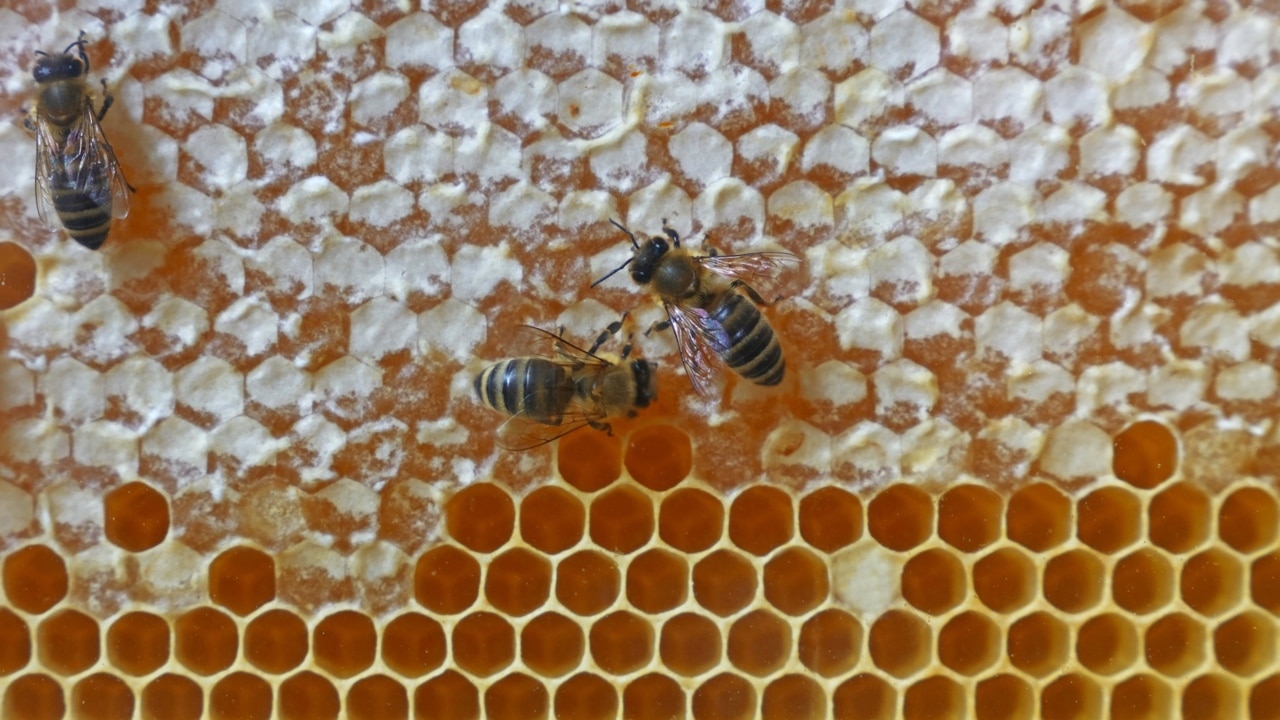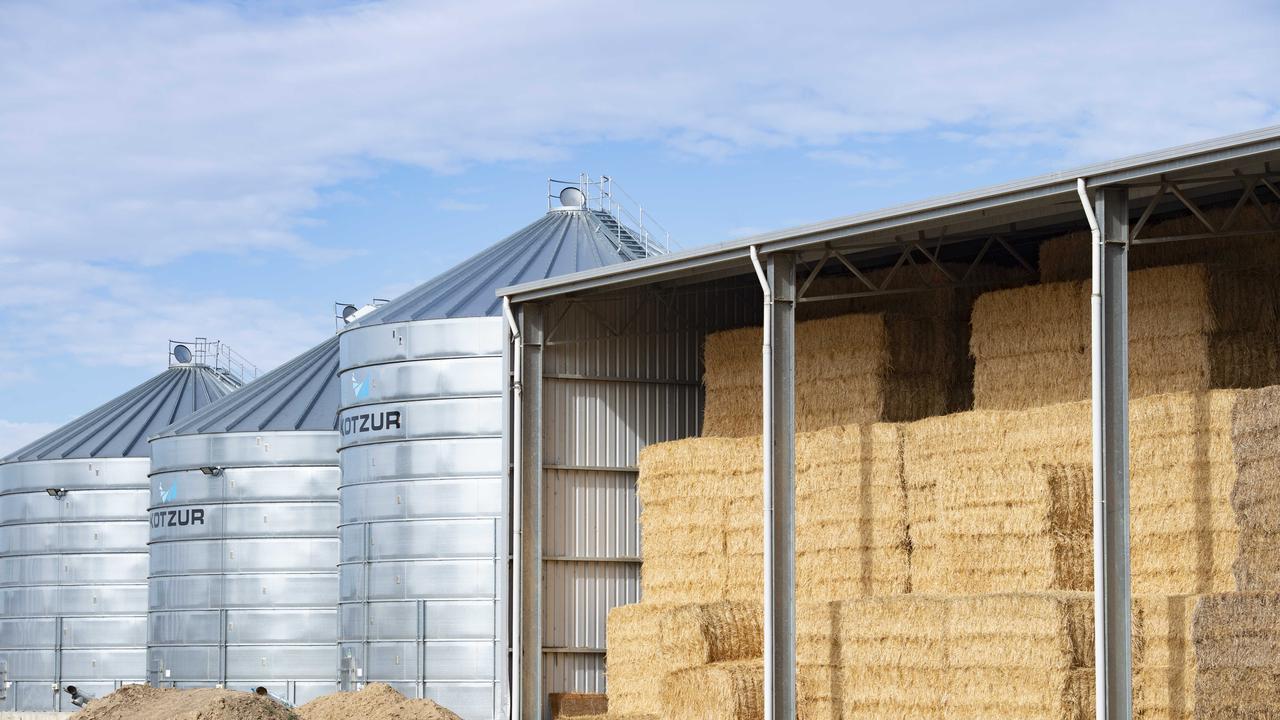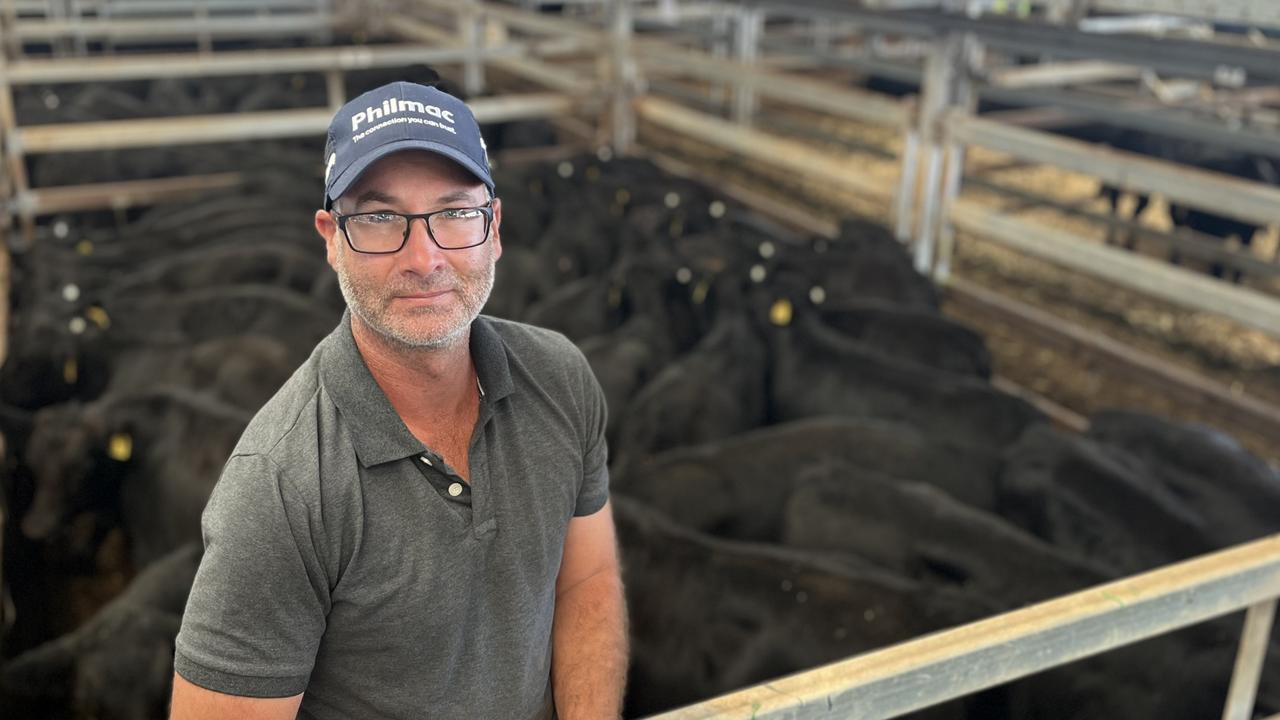Varroa mite: The battle to protect Australian agriculture
Australia’s status as a chemical-free producer of honey hangs in the balance as producers race to remove infested beehives from exclusion zones.

Eradication remains the preferred approach to tackling the ongoing Varroa mite infestation at the NSW and Victorian border.
And Australia’s status as a chemical-free producer of honey hangs in the balance as the destructive mite has infected 250 properties in NSW as of September 5.
Dee Slater is one of two beekeepers in charge of several hives at the Uncommon Folk farming collective on the Mornington Peninsula.
While the enterprise may be small scale, Ms Slater said the effect of the mite outbreak was of concern, both environmentally and from a business perspective.
“Food has been such a problem for bees, so we haven’t wanted to overpopulate, and now with this threat of Varroa mite, do we want to?” Ms Slater said.
“The rest of the world has managed to learn to live with this awful mite. In Australia until now we’ve been so lucky to have chemical-free honey, and that’s now under threat.
“Biosecurity has been trying really hard but it’s a difficult one for a number of reasons, and with whole colonies being moved around, there’s no way of knowing what could happen.”
Last week Agriculture Victoria announced new Victorian permits allowing movement of bee hives out of the established Victorian section of the 10-25km surveillance zone.
Victorian Apiarists Association vice president Phillip McPherson said the priority for the industry was to move hives that have finished with almond pollination out of exclusion zones in NSW and Victoria.

“There’s such a concentration of bees in one area, and once the trees stop flowering, there’s nothing else for the bees to work and they turn on themselves and start robbing,” Mr McPherson said.
And with many hives under contract for upcoming pollination of stone fruit and canola, Mr McPherson said time was of the essence.
“Our stance at the moment is to continue with eradication of Varroa mite,” Mr McPherson said.
“If after this outbreak in southern NSW there are further outbreaks from bees that went away from almond pollination, it would possibly be time to move to a control phase with the anticipation of learning to live with it.”
But adopting new practices to farm with the pest would be both time consuming and costly to producers, while also putting the feral bee population at risk, Mr McPherson said.
“It would probably amount to a lot of recreational beekeepers not keeping bees anymore, the requirements will be too restrictive. It will be an enormous hit to vegetable patches, and also to commercial vegetables and stone fruit growers relying on feral bees.”





